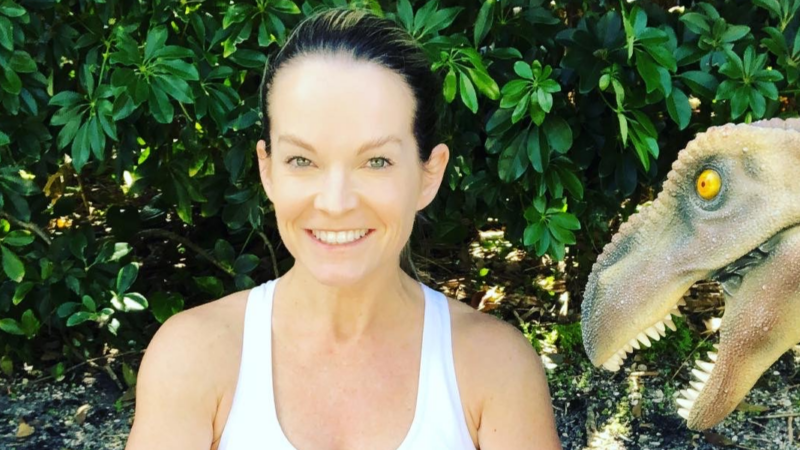Lavender Rose Chocolate Truffles
Lavender Rose Chocolate Truffles
From the book, Whole Girl by Sadie Radinsky
INGREDIENTS:
- 1/2 cup coconut cream, from the top of a chilled 13 1/2-ounce can of full-fat coconut milk
- 1 1/2 cups dark chocolate chips or chopped dark chocolate
- 2 drops food-grade pure lavender oil
- 1/4 cup cacao powder
- 2 Tbsp dried rose petals, crushed
INSTRUCTIONS:
- Scoop the coconut cream into a double boiler. Heat the coconut cream until it’s hot to the touch, then pour in the chocolate. Turn the heat down to medium-low. Stir the chocolate and coconut cream together until the chocolate is fully melted and the mixture forms a shiny ganache.
- Remove the ganache from heat and stir in the lavender oil. Place the bowl of ganache in the refrigerator to chill for 2 hours, or until completely solid.
- Line a plate with parchment paper. Scoop the chocolate mixture into 16 pieces using a tablespoon, and place on the plate. Don’t worry about forming the pieces into spheres yet. Place the plate back in the refrigerator for 10 minutes to firm up.
- Pour the cacao powder and crushed rose petals into 2 small separate bowls. Roll the refrigerated chocolate blobs into balls, then roll them in either cacao powder, rose petals, or leave them plain. Serve.
- Store leftover Lavender Rose Chocolate Truffles in an airtight container in the refrigerator for about 1 week, or freeze for up to 1 month. Defrost before serving.
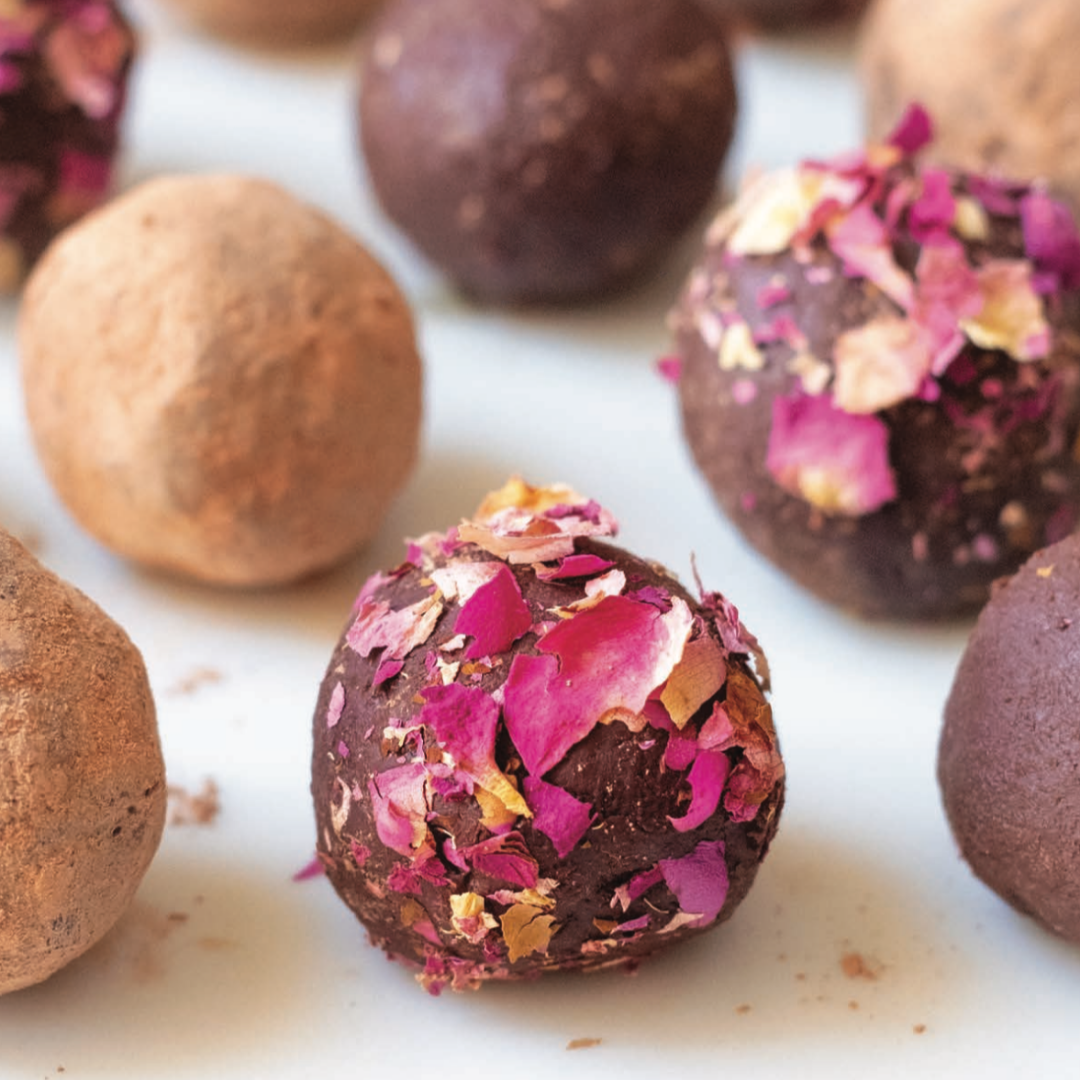
This recipe is featured in the young adult book, Whole Girl: Live Vibrantly, Love Your Entire Self, and Make Friends with Food by Sadie Radinsky.
 Sadie Radinsky is a 19-year-old blogger and recipe creator. For over six years, she has touched the lives of girls and women worldwide with her award-winning website, wholegirl.com, where she shares paleo treat recipes and advice for living an empowered life. She has published articles and recipes in national magazines and other platforms, including Paleo, Shape, Justine, mindbodygreen, and The Primal Kitchen Cookbook. She lives in the mountains of Los Angeles. For more, visit wholegirl.com.
Sadie Radinsky is a 19-year-old blogger and recipe creator. For over six years, she has touched the lives of girls and women worldwide with her award-winning website, wholegirl.com, where she shares paleo treat recipes and advice for living an empowered life. She has published articles and recipes in national magazines and other platforms, including Paleo, Shape, Justine, mindbodygreen, and The Primal Kitchen Cookbook. She lives in the mountains of Los Angeles. For more, visit wholegirl.com.
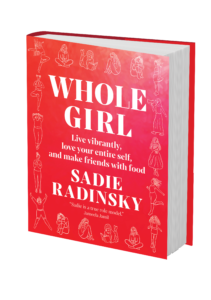 Sounds True | Amazon | Barnes & Noble | Bookshop | Indiebound
Sounds True | Amazon | Barnes & Noble | Bookshop | Indiebound
Meet the Author of Dinos Don’t Do Yoga
The Author
Catherine Bailey is the author of multiple picture books, including Harbor Bound and Mind Your Monsters. For more, please visit catherinebaileybooks.com.
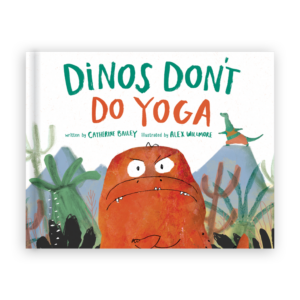 The Book
The Book
Rex is a dinosaur with a rough, tough crew. But when a yoga-loving dinosaur comes to town, Rex and his fierce friends discover there’s more to strength than big muscles and bad attitudes. This fun-filled story features timely themes about kindness, friendship, and being able to see past our differences.
Has your book taken on a new meaning in the world’s current circumstances? Is there anything you would have included in your book if you were writing it now?
Dinos Don’t Do Yoga was written back during the calm and quiet of 2018. At the time, it was simply a funny story about a grumpy T. rex. Today we are living in a very different world. Things have changed dramatically in terms of how people interact with each other—from social distancing to increased activism.
So now when I read Dinos Don’t Do Yoga, the relationships between the characters are more meaningful. I hope my readers see kindness, acceptance, and connection (in addition to a funny story!). I also hope that the book inspires children to explore yoga as a physical means of dealing with the stress of these crazy times. Yoga is a beautiful way to get back to a happy mental space.
After all, if dinos can do it—so can we!
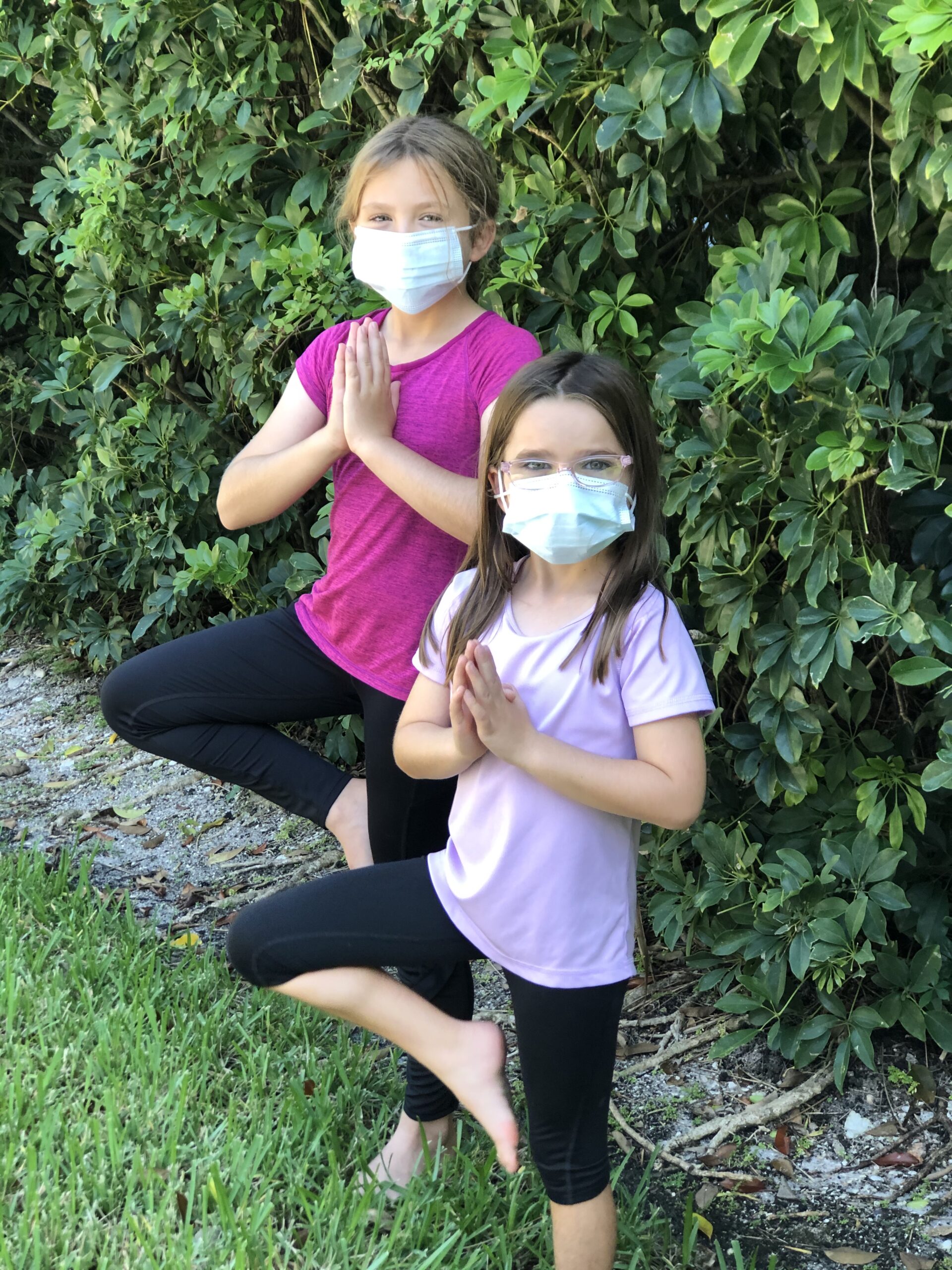
Send us a photo of you and your pet, and let us know if your pet had any role in helping you write your book!
Here we have a snapshot of the world’s most annoyed cat. I decided to share this particular picture because it reminded me of the Dinos Don’t Do Yoga cover. The illustrator of the book, Alex Willmore, brilliantly contrasted the highly disgruntled Rex (complete with eye twitch!) with his blithely happy costar, Sam. I laugh every time I see that artwork!
The same is true for this photograph of myself and our family cat, Chloe. This picture was taken right after her first (and probably last) bath. In my defense, I only bathed her because she had a small flea problem. She still has not forgiven me.
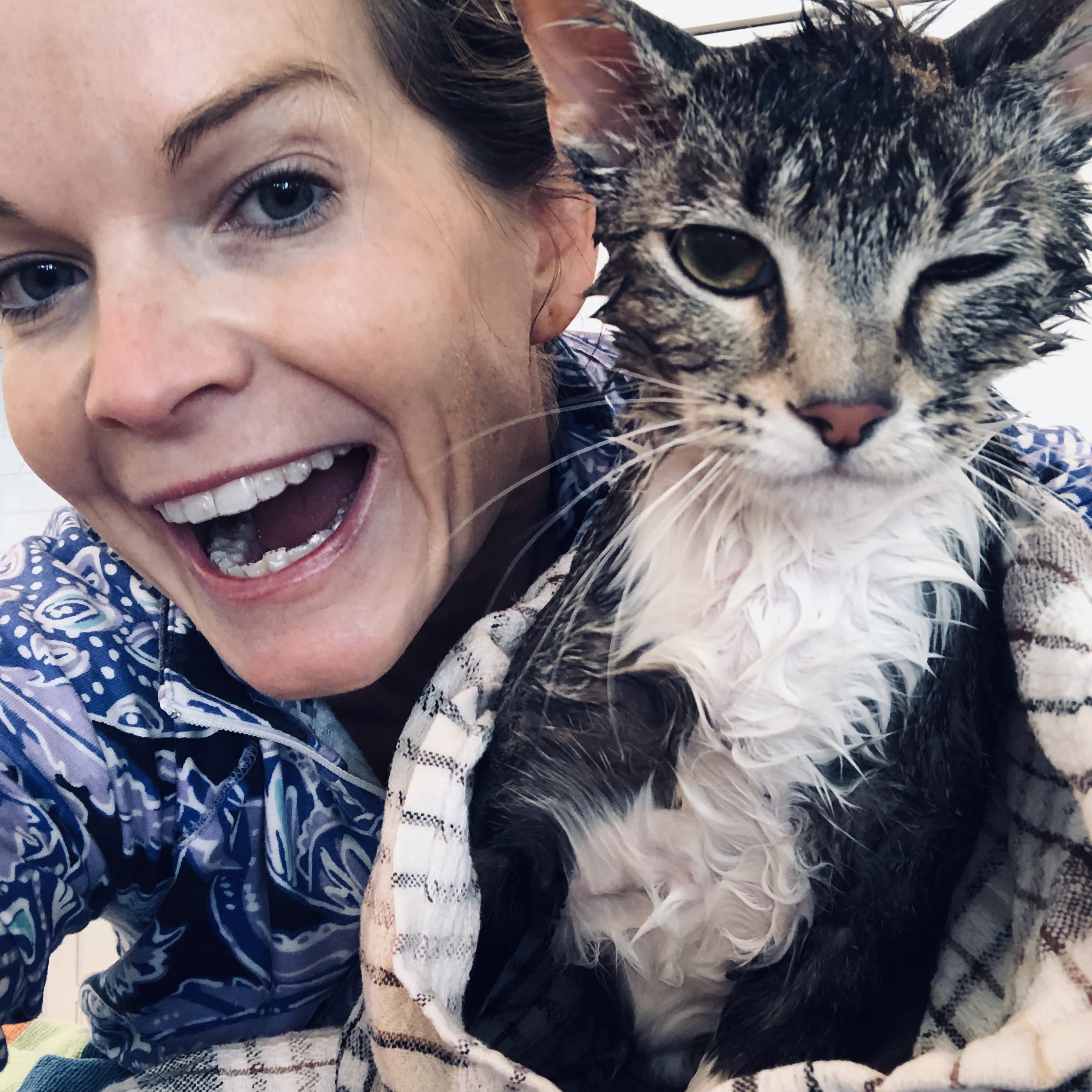
What is something about you that doesn’t make it into your author bio?
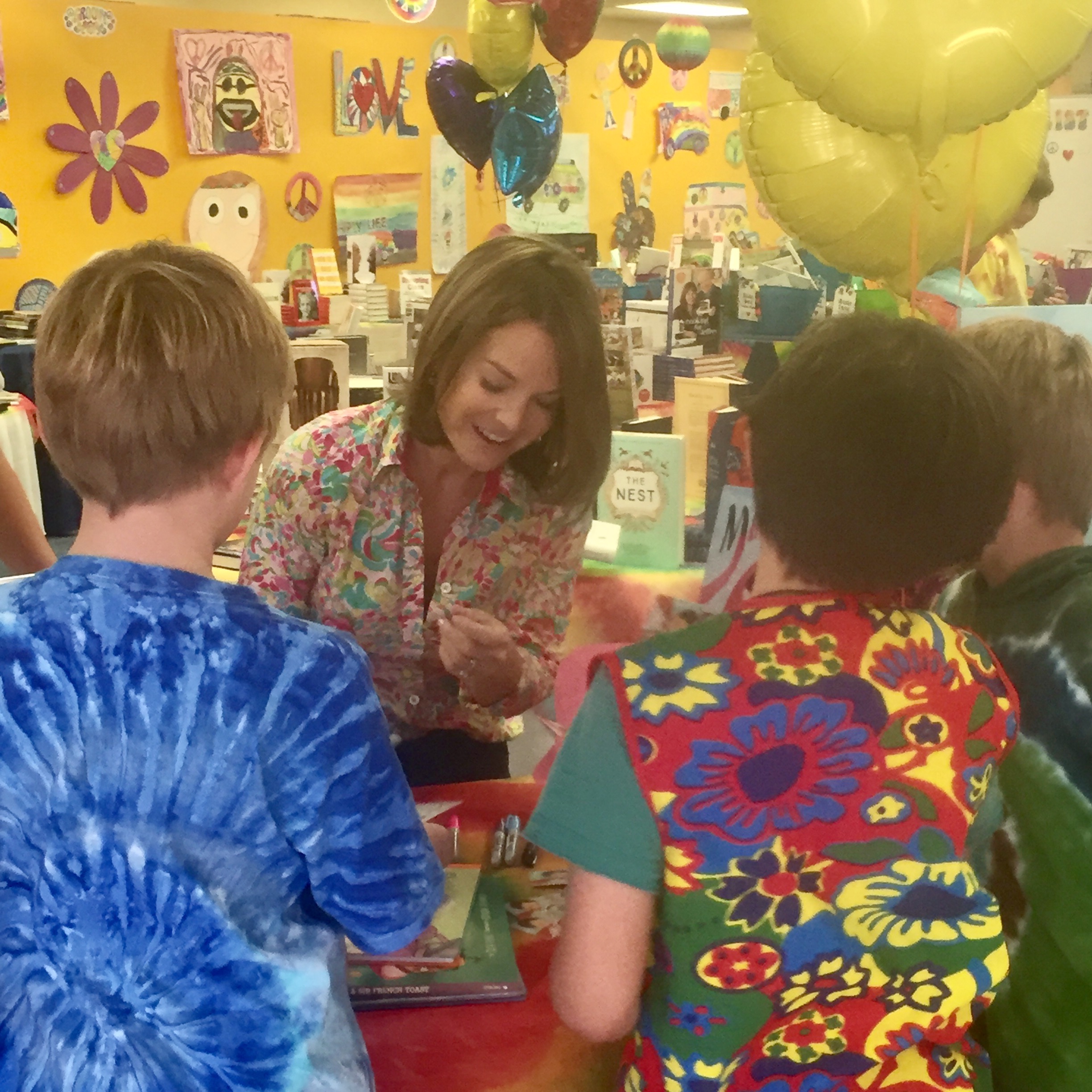
My author biography contains all sorts of fun tidbits, but it doesn’t mention this one cool thing about me: I am kid-sized! By which I mean I’m very short for my age. You cannot tell from (most) pictures, but even though I am an official middle-aged grown-up, I am only 4’8” tall. That is about the size of the average second grader!
So why do I mention it? What’s so great about being super small? Well, a lot of things! But best of all is that it makes me empathetic and mindful of other people’s differences. And that makes me a better writer. For example, it was easy for me to create the characters of Rex (challenged by his petite arms) and Sam (a true “outsider”) in Dinos Don’t Do Yoga. It is true what they say—great things come in small packages.

Learn More
Sounds True | Amazon | Barnes & Noble | IndieBound | Bookshop
Let it R.A.I.N – a home for all of you – with Rick Hanson
Dear friends, some years ago a simple, yet powerful approach to working with difficult emotions emerged out of the intersection of the fields of mindfulness and psychotherapy. Come to be known as the “RAIN” technique (an acronym for the four steps of the process), many therapists, meditators, healers, and practitioners have found it to be incredibly helpful for on-the-spot relief and support during challenging times.
Here, friend and Sounds True author, Dr. Rick Hanson, describes the RAIN practice and the benefits is offers. This article was originally published by our friends at The Huffington Post. We hope you find it helpful and beneficial in your own life – and in the work you may be doing with others.
Let it R.A.I.N. – by Rick Hanson, PhD
When you’re young, the territory of the psyche is like a vast estate, with rolling hills, forests and plains, swamps and meadows. So many things can be experienced, expressed, wanted, and loved.
But as life goes along, most people pull back from major parts of their psyche. Perhaps a swamp of sadness was painful, or fumes of toxic wishes were alarming, or jumping exuberantly in a meadow of joy irritated a parent into a scolding. Or maybe you saw someone else get in trouble for feeling, saying, or doing something and you resolved, consciously or unconsciously, to Stay Away From That Place Forever.
In whatever way it happens, most of us end up by mid-adulthood living in the gate house, venturing out a bit, but lacking much sense of the whole estate, the great endowment of the whole psyche. Emotions are shut down, energetic and erotic wellsprings of vitality are capped, deep longings are set aside, sub-personalities are shackled and silenced, old pain and troubles are buried, the roots of reactions — hurt, anger, feelings of inadequacy — are veiled so we can’t get at them, and we live at odds with both Nature and our own nature.
Sure, the processes of the psyche need some regulation. Not all thoughts should be spoken, and not all desires should be acted upon! But if you suppress, disown, push away, recoil from, or deny major parts of yourself, then you feel cut off, alienated from yourself, lacking vital information about what is really going on inside, no longer at home in your own skin or your own mind — which feels bad, lowers effectiveness at home and work, fuels interpersonal issues, and contributes to health problems.
So what can we do? How can we reclaim, use, enjoy, and be at peace with our whole estate — without being overwhelmed by its occasional swamps and fumes?
This is where R.A.I.N. comes in.
How?
R.A.I.N. is an acronym developed by Michelle McDonald, a senior mindfulness teacher, to summarize a powerful way to expand self-awareness. (I’ve adapted it a bit below, and any flaws in the adaptation are my own, not Michelle’s.)
R = Recognize: Notice that you are experiencing something, such as irritation at the tone of voice used by your partner, child, or co-worker. Step back into observation rather than reaction. Without getting into story, simply name what is present, such as “annoyance,” “thoughts of being mistreated,” “body firing up,” “hurt,” “wanting to cry.”
A = Accept (Allow): Acknowledge that your experience is what it is, even if it’s unpleasant. Be with it without attempting to change it. Try to have self-compassion instead of self-criticism. Don’t add to the difficulty by being hard on yourself.
I = Investigate (Inquire): Try to find an attitude of interest, curiosity, and openness. Not detached intellectual analysis but a gently engaged exploration, often with a sense of tenderness or friendliness toward what it finds. Open to other aspects of the experience, such as softer feelings of hurt under the brittle armor of anger. It’s OK for your inquiry to be guided by a bit of insight into your own history and personality, but try to stay close to the raw experience and out of psychoanalyzing yourself.
N = Not-identify (Not-self): Have a feeling/thought/etc., instead of being it. Disentangle yourself from the various parts of the experience, knowing that they are small, fleeting aspects of the totality you are. See the streaming nature of sights, sounds, thoughts, and other contents of mind, arising and passing away due mainly to causes that have nothing to do with you, that are impersonal. Feel the contraction, stress, and pain that comes from claiming any part of this stream as “I,” or “me,” or “mine” — and sense the spaciousness and peace that comes when experiences simply flow.
R.A.I.N. and related practices of spacious awareness are fundamental to mental health, and always worth doing in their own right. Additionally, sometimes they alone enable painful or challenging contents of mind to dissipate and pass away.
But often it is not enough to simply be with the mind, even in as profound a way as R.A.I.N. Then we need to work with the mind, by reducing what’s negative and increasing what’s positive. (It’s also necessary to work with the mind to build up the inner resources needed to be with it; being with and working with the mind are not at odds with each other as some say, but in fact support each other.)
And whatever ways we work with the garden of the mind — pulling weeds and planting flowers — will be more successful after it R.A.I.N.s.
Rick Hanson, Ph.D., is a neuropsychologist and author of Hardwiring Happiness: The New Brain Science of Contentment, Calm, and Confidence (from Random House in October, 2013; in 4 languages), Buddha’s Brain: The Practical Neuroscience of Happiness, Love, and Wisdom (New Harbinger; in 24 languages), Just One Thing: Developing a Buddha Brain One Simple Practice at a Time (New Harbinger; in 12 languages), and Mother Nurture: A Mother’s Guide to Health in Body, Mind, and Intimate Relationships(Penguin). Founder of the Wellspring Institute for Neuroscience and Contemplative Wisdom and an Affiliate of the Greater Good Science Center at UC Berkeley, he’s been an invited speaker at Oxford, Stanford, and Harvard, and taught in meditation centers worldwide. A summa cum laude graduate of UCLA, his work has been featured on the BBC, NPR, CBC, FoxBusiness, Consumer Reports Health, U.S. News and World Report,and O Magazine and he has several audio programs with Sounds True. His weekly e-newsletter – Just One Thing – has over 91,000 subscribers, and also appears on Huffington Post, Psychology Today, and other major websites.

Your confusion is not pathology, it is path
Your confusion is not pathology, it is path. It has something to reveal to you that clarity and certainty could never, ever show you. The nature of confusion is wisdom, but you must make a home for it within you to receive its mysteries.
Your feeling of disconnection is not neurotic, it is intelligent. It has something to reveal to you that oneness could never, ever show you. If you will allow it to unfold, resisting the temptation to send it away, it will expose a secret within you.
Your sadness, your loneliness, your fear, and your anxiety are not mistakes. They are not obstacles on your path. They *are* the path. The freedom you are longing for is not found in the eradication of these, but in the information they carry. You need not transcend anything here, but be willing to become deeply intimate with your lived, embodied experience. Your intimacy is your path home.
There are movements of somatic wisdom arising within you that contain very important information for your journey. If you will provide shelter for what is burning within, you will see that these are no ordinary messengers. They are harbingers of integration, sent from beyond to reveal the wholeness that is the signature of this dimension. Nothing is missing, nothing is out of place, nothing need be sent away. Inside your body, in the center of your emotions, in the core of your somatic experience the sacred world is wild and alive. Feel it, friends. You have been brought to right here and right now, for this.
The beloved is here and she will continue to send her envoys to you, in the form of oneness and separation, broken and whole, confusion and clarity, and sadness and joy. Each of love’s forms has come to unlock a unique place within you, so that a particular form of light can come through into this world. You will burn until you are translucent, but it is within this burning that your gifts will be revealed.

The new Sounds True online community
Friends, I want to let you know about the new Sounds True online community, a space that we’ve dedicated to meaningful conversation with you, our listeners from around the world. Through the community, it is our intention to support you to connect with fellow journeyers on the path in a way that is meaningful and transformative for you. As part of the community, we’ll be initiating book clubs and practice groups (which you can initiate as well!), sharing our experience with certain titles and authors, dialoguing about the journey of awakening and healing, discussing practices of meditation and prayer, facilitating local meetings with like-minded people, and whatever you might be drawn to share or discuss.
Of course, the community is totally free. We’d love to have you!

9 Ways to Build Your Village
You and I aren’t likely to experience what it’s like to raise children in an actual village, like many mothers who have come before us. But that’s okay.

